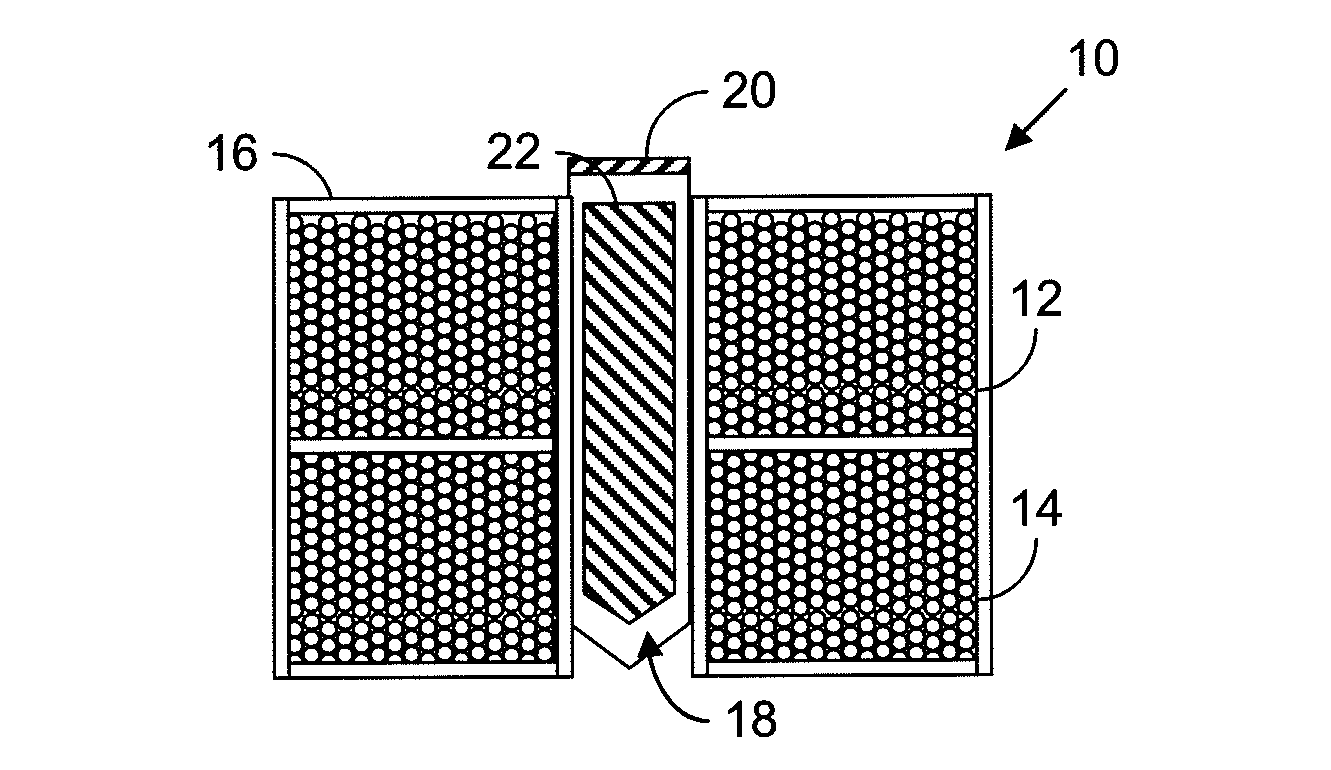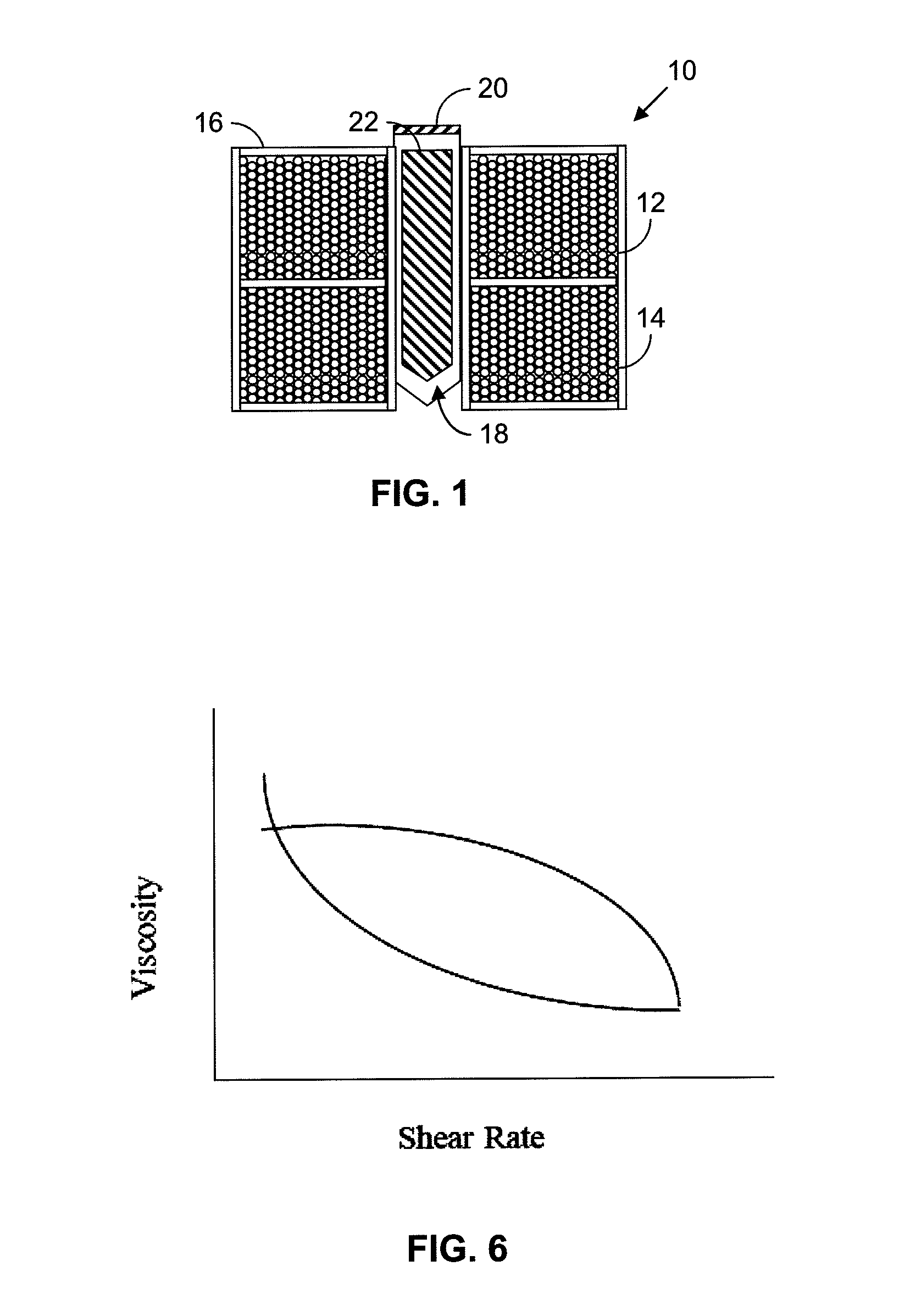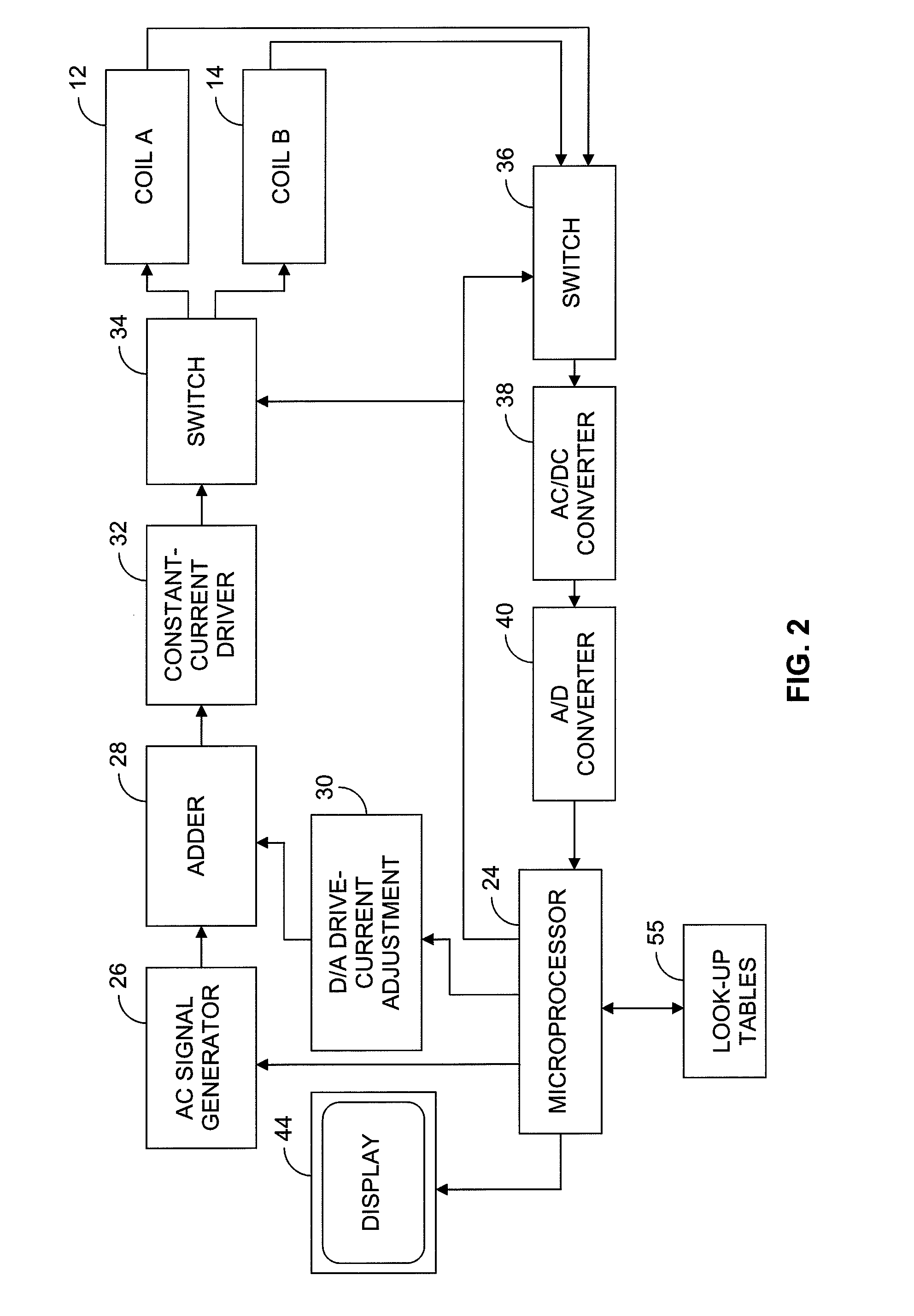Dynamic reciprocating-bob rheometry
a bob rheometer and bob technology, applied in the field of viscosity and related fluid properties measurement, can solve the problems of dissuading researchers from screening, applications in which they have not proved very practical, etc., and achieve the effects of low cost, extended sensor range, and ruggedness
- Summary
- Abstract
- Description
- Claims
- Application Information
AI Technical Summary
Benefits of technology
Problems solved by technology
Method used
Image
Examples
Embodiment Construction
[0021]FIG. 1 is cross-sectional view of one type of sensor that can employ the present invention's teachings. The sensor 10 is largely cylindrical and includes two separately driven coils 12 and 14 displaced axially from each other and isolated by a housing 16 from the liquid whose viscosity or other property is to be measured. But fluid is allowed to flow into a central sample well 18 at whose mouth is located a bob-retention spider 20, which confines a ferromagnetic bob 22 to the well 18. Alternately driving the two coils 12 and 14 causes the bob 22 to reciprocate against the sample liquid's viscous drag.
[0022]FIG. 2 depicts control circuitry for achieving that result. A microprocessor 24 controls an AC-signal generator 26 to cause it to produce an AC signal that an adder circuit 28 adds to a DC signal from a microprocessor-controlled digital-to-analog converter 30. The resultant adder-28 output is a low-level AC voltage superimposed on a DC voltage whose level the microprocessor ...
PUM
 Login to View More
Login to View More Abstract
Description
Claims
Application Information
 Login to View More
Login to View More - R&D
- Intellectual Property
- Life Sciences
- Materials
- Tech Scout
- Unparalleled Data Quality
- Higher Quality Content
- 60% Fewer Hallucinations
Browse by: Latest US Patents, China's latest patents, Technical Efficacy Thesaurus, Application Domain, Technology Topic, Popular Technical Reports.
© 2025 PatSnap. All rights reserved.Legal|Privacy policy|Modern Slavery Act Transparency Statement|Sitemap|About US| Contact US: help@patsnap.com



